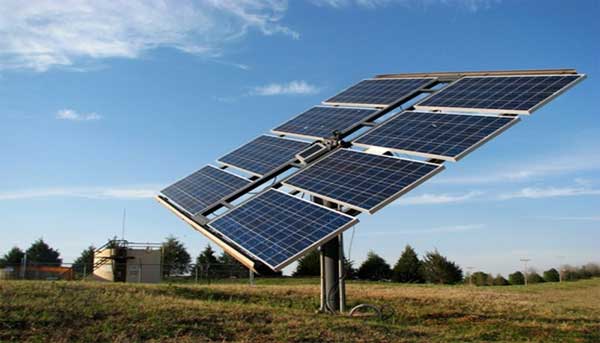Government of India is considering a $25 million investment as capital contribution to the Global Solar Facility
ISA to provide $10 million to the GSF
Amidst a $12.5 trillion global renewable energy investment gap, the GSF steps up to bridge the divide, focusing on stimulating investments in off-grid solar in underserved regions
The Global Solar Facility (GSF) is designed to catalyze solar investments in underserved segments and geographies across Africa, unlocking commercial capital in the process. Last year, the ISA Assembly approved the Global Solar Facility, which is expected to attract private capital to flow into off-grid solar projects, rooftop solar projects, and productive use solar projects. This financing vehicle, bolstered by payment guarantees, insurance, and investment funds, aims to mitigate project risks, provide technical assistance to address regulatory gaps, reduce currency risks, and resolve contractual and financial uncertainties in the solar energy sector.
The Government of India is considering a $25 million investment as capital contribution in the GSF in addition to $10 million coming from the ISA. Bloomberg Philanthropies and CIFF have also committed their support to the GSF.
Union Minister for Power and New & Renewable Energy, Government of India, and President, International Solar Alliance Assembly, R K Singh said that the target for the GSF is to raise 100 million USD and that the aim going forward would be to globalize the GSF. “Global Solar Facility aims to leverage investments to accelerate transition to solar energy. The target for the GSF is to raise 100 million USD. Africa has immense potential in deploying solar energy capacities, yet due to risks in investments, the region has not been able to leverage its potential. The GSF aims to address this challenge and provide security to investments. India is a good example of development due to private sector investments. It has no sovereign risks and has a strong legal and security framework with a dispute mechanism and security of payments, which has enabled India to attract investments. In the years to come, we will look at globalizing the GSF. I invite all the Member Countries and organizations to partner with us in making this Facility a catalyst for the transformative change that we all are working towards.”
Director General of the International Solar Alliance, Dr Ajay Mathur said: “The GSF has been working towards crowdsourcing investments from various international donors. We are delighted to have the support of Government of India, CIFF and Bloomberg Philanthropies. This will enhance the confidence of investors to invest in decentralized solar application in Africa and enhance the certainty in receiving returns on their investments and could lead to a sea change in global investment patterns.”
The ISA highlighted that the GSF is expressly designed to provide investors with the confidence to take up projects in Africa and to enabling $10 billion in investments, which will facilitate clean energy access in 35–40 million African households by 2030 and benefit around 200 million people in the region.
Commenting about why the GSF was needed, Dr Mathur said: “The world requires an investment of $12.5 trillion in renewable energy and $23 billion in off-grid solar by 2030. The ISA through its Global Solar Facility is stepping up as current global solar investment falls woefully short, constituting only 10% of the required amount for achieving net-zero emissions. Additionally, there is profound disparity in investments — with developing countries, home to over 50% of the global population, receiving just 15% of 2022’s renewable energy investments. Sub-Saharan Africa’s per capita renewable energy investment has plummeted by 44% from 2015 to 2021. In stark contrast, investments in North America are 41 times higher, and in Europe, they are 57 times greater. The GSF will further our vision of addressing the urgent need for universal energy access and a clean energy transition.”
Ms. Kate Hampton, Chief Executive Officer of CIFF said, “We are thrilled to announce CIFF’s commitment to seed funding the International Solar Alliance’s Global Solar Facility, which will unlock critical low-cost institutional and private sector investment for solar in ISA member countries. Here and in all our work, CIFF is resolute in its commitment to championing clean, affordable energy, to driving the global energy transition, and to securing a livable planet for children and young people around the world.”
Antha Williams, who leads environment programs at Bloomberg Philanthropies, said, “African countries are positioned to be global leaders in solar power but lack the capital necessary to unlock their untapped potential. Bloomberg Philanthropies looks forward to continuing its partnership with the International Solar Alliance through the Global Solar Facility to help facilitate the widespread deployment of solar energy projects across the continent not only to help solidify the continent as a global leader on clean energy but also address the twin challenges of energy poverty and the climate crisis.”
The ISA highlighted the need for diversifying investments in solar energy in Africa for mitigating climate change and a balanced energy transition. Despite its vast solar potential, Africa possesses only 1.3% of the world’s installed solar capacity (11.4 GW out of 849 GW in 2021). With nearly 600 million people in Africa lacking access to electricity, there exists a compelling case for distributed solar power projects. Following the approval and launch of GSF at COP27, the ISA Secretariat has been conducting discussions with potential investors including member countries, development finance institutions, pension funds, and potential investment managers from across the world. The ISA has signed Memorandum of Understanding (MOUs) with Multi-Lateral Investment Guarantee Fund (MIGA), Africa 50, West African Development Bank (BOAD) for facilitating investments through the GSF in Africa.
After Africa, the GSF aims to expand to regions such as Asia, Latin America and the Middle East, where the Regional Facilities will be tailored to meet specific requirements. In the future, GSF plans to invest in innovative technologies to enhance solar energy efficiency, support startups for faster solar energy implementation, and explore emerging solar energy sectors.
More information about ISA at https://isolaralliance.org/
